I'm trying to implement GMRES in Jupyter Notebook, which is (in case you don't know):
This is my code:
import numpy as np
def GMRes(A, b, x0, e, nmax_iter, restart=None):
r = b - np.asarray(np.dot(A, x0)).reshape(-1)
x = []
q = [0] * (nmax_iter)
x.append(r)
q[0] = r / np.linalg.norm(r)
h = np.zeros((nmax_iter + 1, nmax_iter))
for k in range(nmax_iter):
y = np.asarray(np.dot(A, q[k])).reshape(-1)
for j in range(k):
h[j, k] = np.dot(q[j], y)
y = y - h[j, k] * q[j]
h[k + 1, k] = np.linalg.norm(y)
if (h[k + 1, k] != 0 and k != nmax_iter - 1):
q[k + 1] = y / h[k + 1, k]
b = np.zeros(nmax_iter + 1)
b[0] = np.linalg.norm(r)
result = np.linalg.lstsq(h, b)[0]
x.append(np.dot(np.asarray(q).transpose(), result) + x0)
return x
According to me it should be correct, but when I execute:
A = np.matrix('1 1; 3 -4')
b = np.array([3, 2])
x0 = np.array([1, 2])
e = 0
nmax_iter = 5
x = GMRes(A, b, x0, e, nmax_iter)
print(x)
Note: For now e is doing nothing.
I get this:
[array([0, 7]), array([ 1., 2.]), array([ 1.35945946, 0.56216216]), array([ 1.73194463, 0.80759216]), array([ 2.01712479, 0.96133459]), array([ 2.01621042, 0.95180204])]
x[k] should be approaching to (32/7, -11/7), as this is the result, but instead it is approaching to (2, 1), what am I doing wrong?



